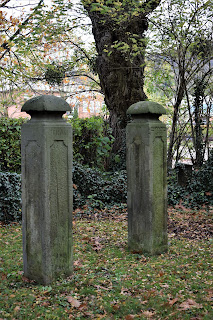Shortly before the end of the High Holidays, a rumour that was in the air for a couple of months already was confirmed: the Gur/Ger hasidic sect, the largest in Israel and probably the only big one that remain united during its 160 years of existence, is splitting.
The Simcha Torah prayers this Monday, in Jerusalem, were held separately by the adepts of the current Gur Rebbe, the Admor Rav Yaakov Aryeh Alter and those of his cousin Rav Shaul Alter. Rav Shaul Alter succeeded to gather on his side around 250 families, that joined him in prayers in a shul in the North of Jerusalem. Gur is considered to count around 11,000 families, with followers outside Israel mostly in the USA (Brooklyn), London and Canada.
The fifth rebbe, Yisrael Alter died childless, being succeeded by his brother, Rav Pinchas Menachem Alter. The current Admor, the 8th rebbe, was born in 1939 and is ruling the dynasty since 1996.
The conflict betwee the two is boiling for a considerable amount of time. Some might say that in fact it started as early as 10 years ago, when the Admor decided to introduce a new way of learning that in the end leaded to the closure of the Sfas Emes yeshiva whose head was Rav Shaul Alter, a position he took over from his father. The partial confirmation of the big split that was supposed to follow took place early this year, after Rav Shaul was not invited to the wedding of the Admor's grandson in Jerusalem.
The split is official now, and the communication on behalf of the current Gur leadership outlined diplomatically that everything was done in order to avoid the situation, but to no avail. Now, that the holidays are over, those who followed Rav Shaul Alter are expected to be expelled from the main institutions of the sect, and among others, their children from the yeshiva and the other institutional organisations. The first step towards recognition of the new group will be the state approval for the creation of new institutions, such as schools, yeshivot, but most probably this will last. Gur remains a very powerful force among the Hasidic/ultra-orthodox political entities in Israel, particularly Agudas Israel party.
Rav Shaul Alter is expected to visit soon the USA in order to get more support, both in terms of new followers and financially. There might be many more members of the Gur keen to join the dissenters, but they will rather wait the next steps and the settlement of the institutional and financial resources in order to avoid risking their status and the incumbent benefits.
The Gur is considered alongside Toldot Aharon, one of the closest Hasidic sects, with its own bizarre rules regulating the relationships between (married) men and women, and a strict control of the rebbe over the hasid's personal life. Inside testimonies are rare, and when it happens they have a deeply dramatic turn, as it was the case of Esty Weinstein, a former Gur who committed suicide in 2016 following the forced separation from her children, leaving behind a memoir about her struggles within the sect.
The everyday life of a Gur couple is regulated by takanot - Ordinances on Holiness - which recommend, among others, very limited sexual relationship (preferably only once a month, after leil tevilah - immersion of the woman in the mikve at the end of the period), minimal contact during the intercourse or requirement to the man to remain partially dressed when having intimate relationship with his wife. Such stringencies create a relatively problematic issue for matchmaking representatives of the Gur hasidim outside the sect. I remember how a couple of years ago, a friend of mine was about to marry a Gur, until she found out about the takanot and run as far as possible from the match.
What exactly the new group will bring, including in this very personal and intimate respect, remains to be known. The time and the next moves on both sides will show in the next weeks and months.

























